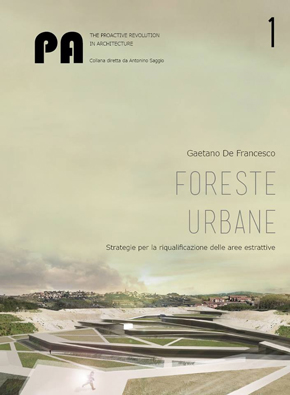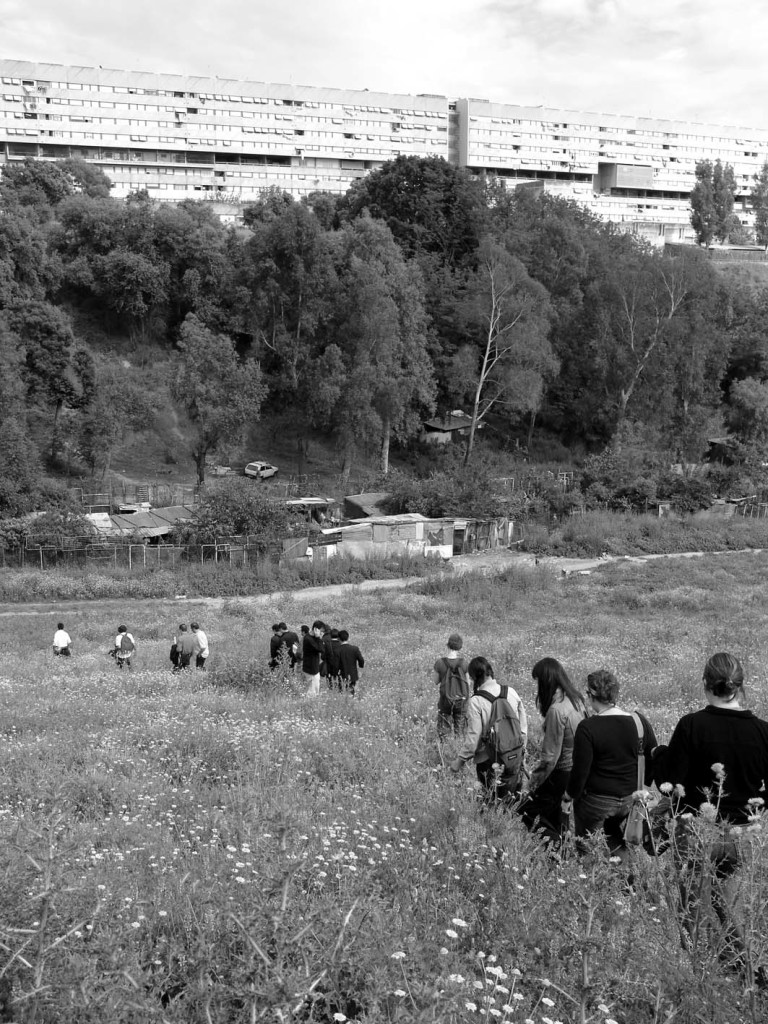MAKER FAIRE ROME 5-6 Ottobre 2013
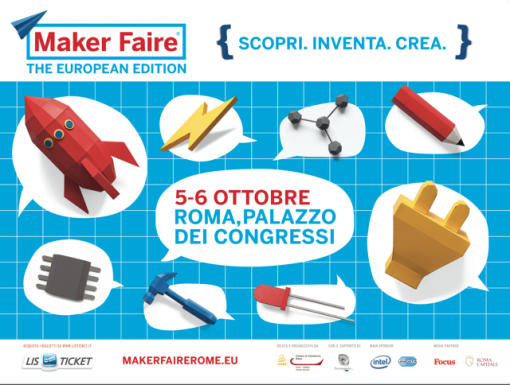
intervista ad Alessandro Ranellucci e Stefano Venditti
di Enrico Pieraccioli e Claudio Granato
After generations of digital natives, we are talking again about crafts through the “makers”. We are not only talking about “geeks”, but also about a real phenomenon already underway that focus the importance of human creativity during the cultural debates, becoming the “next big thing” of the next decade. The so-called 3rd industrial revolution since 2005, digital craftsmen have become a strong expanding fact that links USA to Europe thanks to 3d printers, opensource comunity and fablab. In October the Maker Faire, that is an international circuit where digital craftsmen, scientists and computer programmers and designers from all over the world can show their projects in order to promote and share ideas and proposals, propose a European Edition calendar in Rome.
For a better understanding we heve interviewed
Alessandro Ranellucci an architect who has approached 3d printing since 2011 and has decided to give his contribution by helping a community of makers, by making a record breaking open source software Slic3r useful to print freely. He’ s actually engaged in the organization of the temporary Fablab Maker Faire Rome.
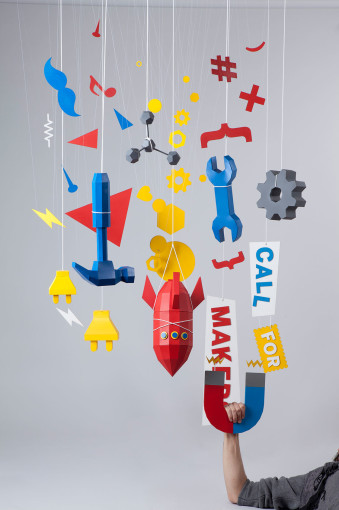
C&E: As a result of the industrial revolution a new school of thought was born, aimed to intervene on relationship between industry and handicrafts. Will these technological innovations generate new stylistic researches, or will be forced to establish a new Arts & Crafts in a second time to remedy against an uncontrolled eclecticism imposed by mass divulgation?
AR: The novelties that we are watching today are in many ways a phenomenon more similar to an Arts & Crafts movement rather than an industrial revolution. All the typical elements of the Makers movement are directed towards deindustrialization, undermining from the ground the concepts of mass production, economies of scale, dichotomy between prototype and product, between producer and consumer. The prototype coincides with the product, because each product is unique. The user coincides with the manufacturer that, in turn, coincides with the designer. Ideas are shared over the network and travel in intangible form, and each actor in the process can introduce their changes before making the object or he can modify it during use adapting it to the new requirements, being both user and designer at the same time. This provided production oriented towards “zero kilometers” is, as a matter of fact, an anti-industrial attitude very similar to the re appropriation of applied arts by Morris. It is clear that these collaborative processes which reject copyrights and patents in favor of an open and comprehensive divulgation, together with the affordability of production processes, go towards global efficiency and maximisation of entropy: in the next years they will act as accelerators of mass processes that have already been running. “Mass customization” is an oxymoron that gives the idea of the ongoing cultural impact. What will be the impact of this design is probably ascribed to the dynamics of mass communication rather than to formal beliefs. In this sense I think that any “uncontrolled” eclecticism will be presented in a form of “variations on the theme” or product customization; all spontaneously bounded by the well-known globalism. There is also to say that actually the makers movement, whose osmotic processes towards other arts are still not entirely complete, is oriented towards a spontaneous functionalism: the “makers” goal is basically to learn from the process, even before using the product itself.
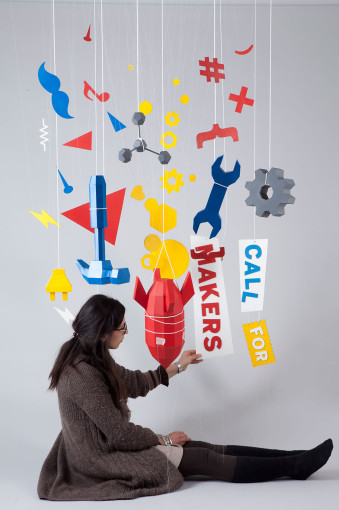
C&E: Could a new kind of professionals figures arise from the various “makers” that will break down the role of architects, artists and designers? And about traditional training institutions (Universities, Academies etc…), how do you think they will relate to that kind of phenomenon?
AR: It is more likely that architects, artists and designers will be actively or passively influenced by technological and cultural innovations brought by the maker movement, without necessarily losing their identity nor requiring new garments and fields of action. The “maker” world is variously made up of people who perform and transform in order to learn and share, pursuing their interests so spontaneously, leaping into new projects or joining existing projects working together with people who were stranger before. The figure of the “on commission maker“, therefore of a professional, strides with the principles of this movement: If there is a customer there is no longer a strictly personal relationship with the project, and on the other hand, the objective is not to learn from the process but to provide a result. It’s good that colleges and schools become acknowledged with these changes, but without trying to pursue them or imitate them. These are spontaneous processes, and forcing them from above will not work. New technologies (from 3D printing onwards) must be integrated in schools and University Labs, but it’s good that educational institutions and universities do not lose sight of the importance of theoretical contents at high levels, which tend to get lost but are necessary, now more than ever, in order to corroborate and stimulate them. The challenge, not a simple one, lies in figuring out what you are able to learn independently and what is instead, according to a principle of “educational subsidiarity”, an institutional support task.
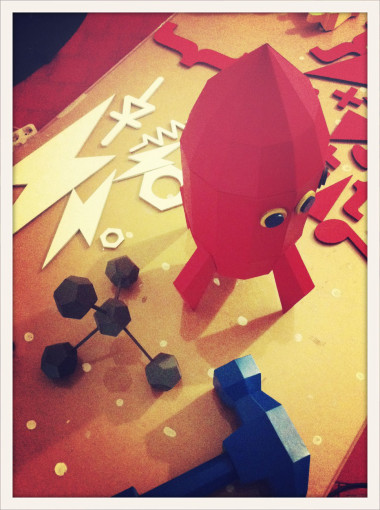
C&E: 3d printing allows to immediatly prototype “from spoon to city”. How do you think this will affect the fluid concept of modernity that Z. Bauman was talking about, by modifying the cities urbanism and life style?
AR: It is no coincidence that the makers movement has developed in urban contexts, where the alienation of individuals from the mechanisms of the production of goods they need is more pronounced. Rediscovering you have the chance to produce by your own, without being limited to be the last ring of the manufacturing and commercial chain, which has no perception of the sizes, smells and processes, has a charm that goes beyond the utility: it represents a return to handicrafts and craftsmanship (that never lost instinct of d.i.y) for generations of digital natives or those who have become urbanized tertiary workers, now far from the traditions lost along with the crafts of their grandparents and parents. But rather than a bluntly return it is a combination of these traditional techniques with the technological and cultural baggage of modernity: Electronics (strongly portrayed and abstract in a software sense), interaction, web, open source. In recent decades, the focus has been placed entirely on the virtual representation of reality: from immersive 3D movies to rendering, from Second Life to Facebook. Now it is the reverse: a collection of cultural processes and technologies are making it easy to switch from a virtual, digital content to a physical object. It is precisely the reaction to Baumann’s liquid modernity: it is the consumer who returns to being the manufacturer, and it doesn’t matter if there is actually a product because what matters is the process of reclaiming and learning tools in which the individual is active again. It would be revolutionary if the long wave of this rediscovery, in cultural terms, would change the shape of the city by reducing the flows to and from distribution centres in favor of local DIY points, while at the same time acting as educational vehicles and points of aggregation and exchange – or rather what is already known in many cities as FabLab.
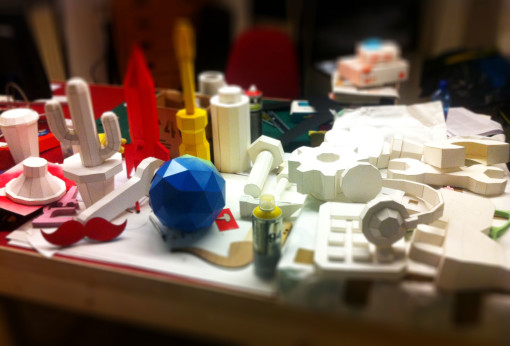
Maker Faire Rome is produced by AssetCamera and its President Stefano Venditti tells us about the relationship between Maker Faire and its development works in favor of the city.
C&E: What has driven AssetCamera to invest in the Organization of the first event at European-level like the Maker Faire of Rome?
SV: Since 2 years, AssetCamera organize events within the World Wide Rome project, created in order to promote the culture of innovation, by choosing Rome as the driving force of the culture, the innovation and change. The new world firstly a new economy with new economic players. In March 2012 we held a conference dedicated to the movement of makers with Chris Anderson, the founder of Wired USA. After the Conference, we received many requests from all local and national situations involved in innovation. At that point we realized that we couldn’t stop. We have created a wider “Innovation Project” that the Chamber of Commerce of Rome, to which we belong as operating arm, has made its own. The Maker Faire Rome – the European Edition that will be held in Rome at the Palazzo dei Congressi dell’EUR – is a part of a plan to make Rome the capital of innovation. The Fair is the first of this size in Europe and it will be possible thanks to the agreement AssetCamera and the American publishing house “Make Media”, owner of the Maker Faire concept. It is a very ambitious project: the goal is to get about 20000 people and over 200 maker exhibitors from all over Europe. This is the first European faire linked to the maker movement that is based on the reuse and the share of data, on creativity and innovation.
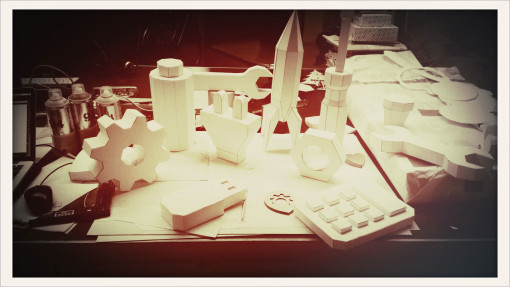
C&E: How do you think that such event could influence creativity and brand new realities? And what kind of business paths could the Maker Faire offer?
SV: In the medium and long term it could allow to lead to important virtuous effects on the economy, where growing maker communities, both young and old, could experience new approaches to technology based on low cost production and at a high level of innovation.
Today the makers could be defined as the new “Leonardos” of the 21st century. They are interested in technology, design, art, sustainability and social innovation. They live on online communities, open source software and hardware, but also on the dream of inventing something they can create themselves in order to live on their own inventions. These are stories of creativity, of people who want to decide their destiny, of young people who know how to build their own future. The makers has been defined as actors of the new industrial revolution; they work in Fab Lab (mostly are university students) where the production methods have changed and job sharing is the key word. All this innovations will be put forward in Rome at the Maker Faire with an important opening Conference, that Riccardo Luna is arranging for us, with guests of international importance, educational approaches for adults and children and,of course, the fair itself, a innovative fantastic and funny innovative theme park where you can interact with real projects and with virtual ones created by the makers.
We want to focus on the importance of a new manufacturing industry, on a new craft, which is the expression of what our country can do better: “create with its hands” i.e. that is doing industry that is both new and different all the time, drawing from our history but also keeping his head in the future.
ITALIAN VERSION _____________________________________________
Dopo generazioni di nativi digitali, si torna a riparlare di artigianato attraverso i “makers”. Non stiamo parlando soltanto di “smanettoni”, ma di un vero e proprio fenomeno ormai già in atto che, rimettendo la creatività umana al centro del dibattito culturale, diventa il “next big thing” del prossimo decennio. Divulgata dai media come la 3° rivoluzione industriale, gli artigiani digitali, già dal 2005, diventano una forte realtà in espansione che dialoga dagli USA all’Europa grazie a stampanti 3d, community opensource e fablab.
Il prossimo ottobre la Maker Faire, circuito internazionale dove scienziati e artigiani digitali, programmatori e designer di tutto il mondo proporranno i loro progetti per promuovere e condividere idee e proposte, metterà in calendario un’edizione europea e sceglie Roma come sede.
Per capire meglio abbiamo intervistato Alessandro Ranellucci, architetto che dal 2011 si è avvicinato alla stampa 3d ed ha deciso di dare il suo contributo aiutando una community di maker. Ha realizzato Slic3r un software open source da record per stampare in piena libertà. Attualmente è impegnato nell’organizzazione del fablab temporaneo per la Maker Faire Rome.
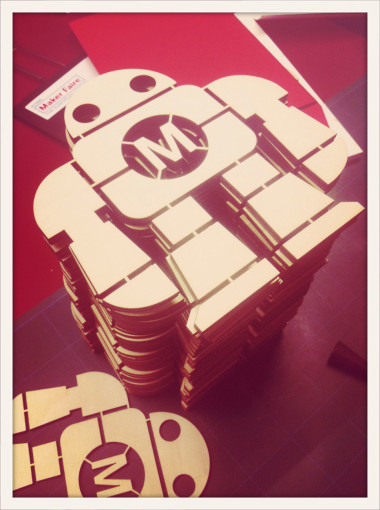
C&E: A seguito della rivoluzione industriale si sono venute a creare nuove correnti di pensiero che sono andate ad intervenire sul rapporto tra industria e artigianato. Queste innovazioni tecnologiche genereranno nuove ricerche stilistiche, o saremo costretti in un secondo momento a istituire una nuova Arts & Crafts, per rimediare ai danni di un eclettismo incontrollato dettato dalla divulgazione di massa?
AR: Le novità cui assistiamo in questi anni costituiscono, per molti versi, un fenomeno molto più simile ad un movimento Arts & Crafts che ad una rivoluzione industriale. Tutti gli elementi caratteristici del movimento makers vanno proprio verso una deindustrializzazione, minando alla base i concetti di produzione di massa, economie di scala, dicotomia tra prototipo e prodotto, tra produttore e consumatore. Il prototipo coincide con il prodotto, perché ogni prodotto è pezzo unico. Il fruitore coincide con il fabbricatore, che coincide a sua volta con il progettista. Le idee sono condivise in rete e viaggiano in forma immateriale, digitale, e ogni attore del processo può introdurre le proprie modifiche prima di produrre l’oggetto. Oppure può modificarlo durante l’uso e adattarlo alle nuove esigenze, essendo appunto fruitore e progettista al tempo stesso. Questa produzione distribuita, tendente al “km zero”, è per l’appunto un atteggiamento anti-industriale molto simile alla riappropriazione delle arti applicate voluta da Morris. È chiaro che questi processi collaborativi, che rifiutano copyright e brevetti in favore della divulgazione aperta e globale, uniti all’accessibilità economica dei processi di produzione, vanno in una direzione di efficienza globale e pertanto di massimizzazione dell’entropia: fungeranno, negli anni a venire, da acceleratori dei processi di massa già in atto. “Mass customization” è un ossimoro che rende l’idea dell’impatto culturale in corso. Quale sarà l’impatto stilistico di tutto questo è probabilmente da ascrivere ancora una volta alle dinamiche della comunicazione di massa più che ai convincimenti formali. In questo senso penso che un eventuale “eclettismo incontrollato” si presenterà in forma di “variazioni sul tema” o di personalizzazione del prodotto; il tutto spontaneamente imbrigliato nel globalismo che bel conosciamo. C’è anche da dire che per ora il movimento makers, i cui processi osmotici verso altre arti sono ancora molto acerbi, è orientato ad uno spontaneo funzionalismo: scopo del “maker” è in fondo imparare dal processo, prima ancora che fruire del prodotto.
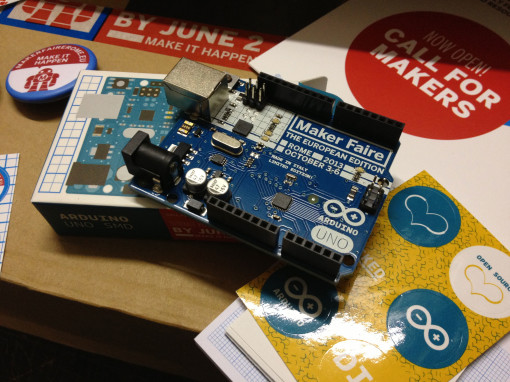
C&E: Dai diversi “Maker” nasceranno nuove figure professionali ad ampio raggio che scardineranno il ruolo, di architetti, artisti e designer? Le classiche istituzioni di formazione (Università, Accademie ecc…), come pensi si relazioneranno con tale fenomeno?
AR: È più probabile che architetti, artisti e designer saranno attivamente o passivamente influenzati dalle novità tecnologiche e culturali portate dal movimento maker, senza necessariamente perdere di identità o necessitare di nuove vesti e campi d’azione. Il mondo dei “maker” è variamente composto da persone che realizzano e trasformano in nome della voglia di imparare e di condividere, perseguendo i propri interessi spontanei e quindi lanciandosi in nuovi progetti o unendosi a progetti già esistenti collaborando con persone prima sconosciute. La figura del “maker su commissione”, e quindi del professionista, stride molto con i principi di questo movimento: se c’è un committente non c’è più un rapporto strettamente personale con il progetto, e d’altra parte l’obiettivo non è imparare dal processo bensì fornire un risultato. È bene che le università e le scuole conoscano questi cambiamenti, senza però cercare di inseguirli o imitarli. Sono processi spontanei, e le forzature dall’alto non funzionano. Le nuove tecnologie (dalla stampa 3D in poi) vanno assolutamente integrate nelle scuole e nei laboratori universitari, ma è bene che le istituzioni scolastiche ed universitarie non perdano di vista l’importanza dei contenuti anche teorici e di alto livello che nei processi spontanei tendono a perdersi ma che servono ora più che mai per corroborarli e stimolarli. La sfida, non semplice, sarà proprio nel capire cosa si impara in autonomia e cosa invece, secondo un principio di “sussidiarietà educativa” è compito istituzionale supportare.
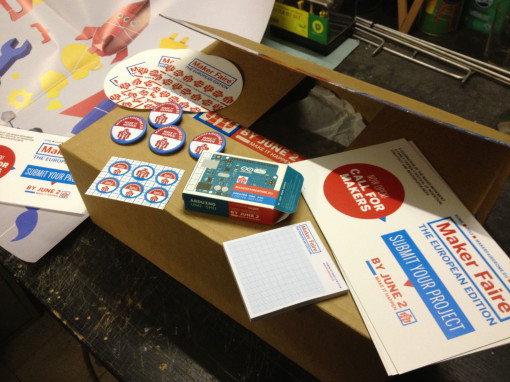
C&E: La stampa 3d permette con immediatezza di prototipare “dal cucchiaio alla città” ; come pensi che questo influenzerà il concetto di modernità fluida di cui parlava Z. Bauman andando a modificare l’urbanistica e il modo di vivere all’interno delle città?
AR: Non è un caso che il movimento makers si sia sviluppato in contesti metropolitani, dove l’alienazione degli individui dai meccanismi di produzione dei beni di cui necessitano è più marcata. La riscoperta della possibilità di produrre in proprio, senza quindi limitarsi ad essere l’anello terminale di una catena manifatturiera e commerciale di cui non si percepiscono dimensioni, odori, processi, ha un fascino che va oltre l’utilità: rappresenta un ritorno alla manualità e all’artigianato (il mai tramontato piacere istintivo del fai-da-te) per generazioni di nativi digitali o di lavoratori del terziario inurbati, ormai distanti dalle tradizioni perse con i mestieri dei loro nonni e genitori. Ma più che di ritorno tout court si tratta di una combinazione di queste tecniche tradizionali con il bagaglio culturale e tecnologico proprio della contemporaneità: l’elettronica (fortemente interpretata e astratta in chiave software), l’interazione, il web, l’open source.
Negli ultimi decenni l’attenzione è stata posta interamente sulla rappresentazione virtuale del reale: dai film 3D immersivi ai rendering, da Second Life a Facebook. Ora avviene il processo inverso: un insieme di tecnologie e processi culturali stanno rendendo facile il passaggio da un contenuto virtuale, digitale ad un oggetto fisico. È precisamente la reazione alla modernità liquida baumaniana: è il consumatore che ritorna produttore, e non importa se effettivamente vi sia un prodotto perché ciò che conta è il processo di riappropriazione degli strumenti e di apprendimento in cui l’individuo è nuovamente parte attiva.
Sarebbe davvero rivoluzionario se l’onda lunga di questa riscoperta, sul piano culturale, influenzasse la forma della città riducendo i flussi da e verso i poli di distribuzione in favore di punti locali di autocostruzione che al tempo stesso fungano da veicoli educativi e punti di aggregazione e scambio – ovvero quello che già ora in molte città prende il nome di FabLab.
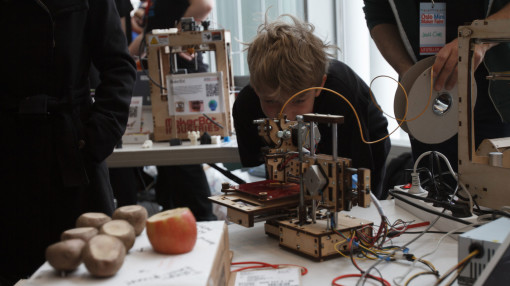
La Maker Faire di Roma è prodotta da AssetCamera. Il presidente Stefano Venditti ci racconta il rapporto tra Maker Faire e il suo sviluppo per la città.
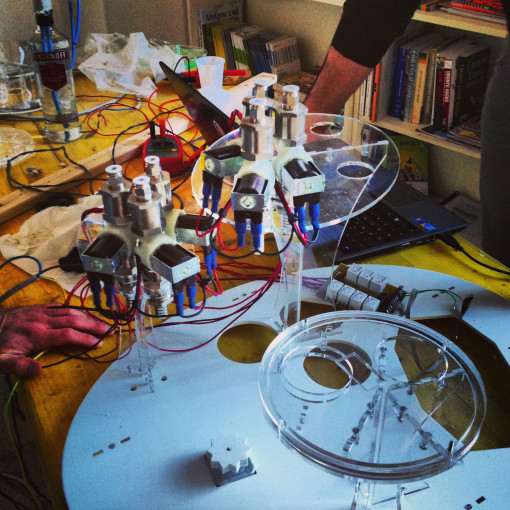
C&E: Cosa ha spinto Asset Camera ad investire nell’organizzazione del primo evento a livello europeo come la Maker Faire di Roma?
SV: Da 2 anni AssetCamera organizza eventi all’interno del progetto World Wide Rome, pensato e dedicato alla promozione della cultura dell’innovazione proponendo Roma come attrattore e propulsore della cultura dell’innovazione e del cambiamento. Il mondo nuovo è innanzitutto un’economia nuova con nuovi attori economici. A marzo 2012 abbiamo dedicato una conferenza al movimento dei makers con Chris Anderson, fondatore di Wired USA. Dopo la conferenza c’è stata una piccola esplosione di interesse e siamo stati sommersi da richieste provenienti da tutte le realtà locali e nazionali che si occupano di innovazione. A quel punto ci siamo resi conto che non potevamo fermarci. Abbiamo dato vita ad un più ampio “Progetto Innovazione” che la Camera di Commercio di Roma, di cui siamo un braccio operativo, ha fatto suo.
La Maker Faire Rome – European Edition che si terrà a Roma al Palazzo dei Congressi dell’EUR – fa parte di un percorso che mira a rendere Roma capitale dell’innovazione. La fiera è la prima di queste dimensioni in Europa e sarà possibile grazie all’accordo che AssetCamera ha stipulato con la statunitense casa editrice “Make Media”, proprietaria dell’idea Maker Faire. É un progetto molto ambizioso : l’obiettivo è circa 20.000 presenze e più di 200 makers che esporranno da tutta Europa. Si tratta della prima fiera europea legata al movimento dei Maker. il movimento dei maker si basa sulla riutilizzazione e condivisione dei dati, sulla creatività e sull’innovazione.
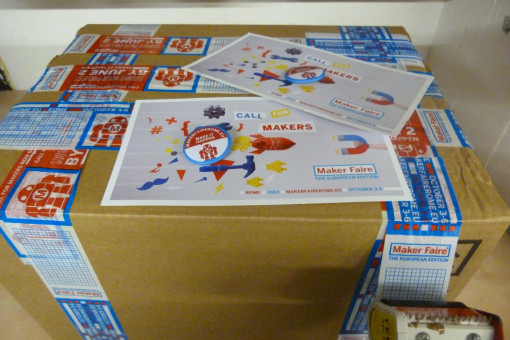
C&E:Come immagina che un evento di questa portata possa influire sulla creatività e le giovani realtà emergenti? E quali strade imprenditoriali può offrire la Maker Faire?
SV: Sul medio e lungo periodo potrebbe permettere di innescare importanti effetti virtuosi sull’economia, in cui comunità crescenti di maker, giovani e meno giovani, sperimentano nuovi approcci alla produzione basati su tecnologie a basso costo e ad alto grado di innovazione. Ad oggi i makers potrebbero essere definiti i “Leonardo” del XXI secolo. Si interessano di tecnologia, design, arte, sostenibilità, social innovation. Vivono di comunità online, software e hardware open source, ma anche del sogno d’inventare qualcosa da produrre autonomamente, per vivere delle proprie invenzioni. Sono storie di creatività, di persone che hanno ripreso in mano il proprio destino, di giovani che hanno capito come costruire il proprio futuro. I makers sono stati definiti come gli attori della nuova rivoluzione industriale; lavorano nei Fab Lab (molti dei quali universitari) in cui si cambiano i modi di produzione e il lavoro condiviso è un imperativo.
Tutto questo movimento sarà rappresentato a Roma in occasione della Maker Faire con una importante conferenza di apertura, che sta curando per noi Riccardo Luna, con ospiti di caratura internazionale, educational per adulti e bambini e ovviamente la fiera vera e propria, un fantastico e divertente parco tematico dell’innovazione dove sarà possibile interagire con i progetti reali e virtuali creati dai makers. Vogliamo accendere i riflettori su una nuova industria manifatturiera, su un nuovo artigianato, che sia l’espressione di quello che il nostro paese sa fare meglio: “creare con le mani” cioè fare industria sempre nuova e sempre diversa, attingendo dalla nostra storia ma con la testa nel futuro.
Info:
photo courtesy of todo.to.it
Related Posts :
Category: Article
Views: 6880 Likes: 1
Tags: ALESSANDRO RANELLUCCI , arduino , ASSET CAMERA , claudio granato , enrico pieraccioli , MAKER FAIRE , PALAZZO DEI CONGRESSI , ROMA , STEFANO VENDITTI
Comments:
Info:
Info:
Title: MAKER FAIRE ROME 5-6 Ottobre 2013
Time: 18 settembre 2013
Category: Article
Views: 6880 Likes: 1
Tags: ALESSANDRO RANELLUCCI , arduino , ASSET CAMERA , claudio granato , enrico pieraccioli , MAKER FAIRE , PALAZZO DEI CONGRESSI , ROMA , STEFANO VENDITTI

